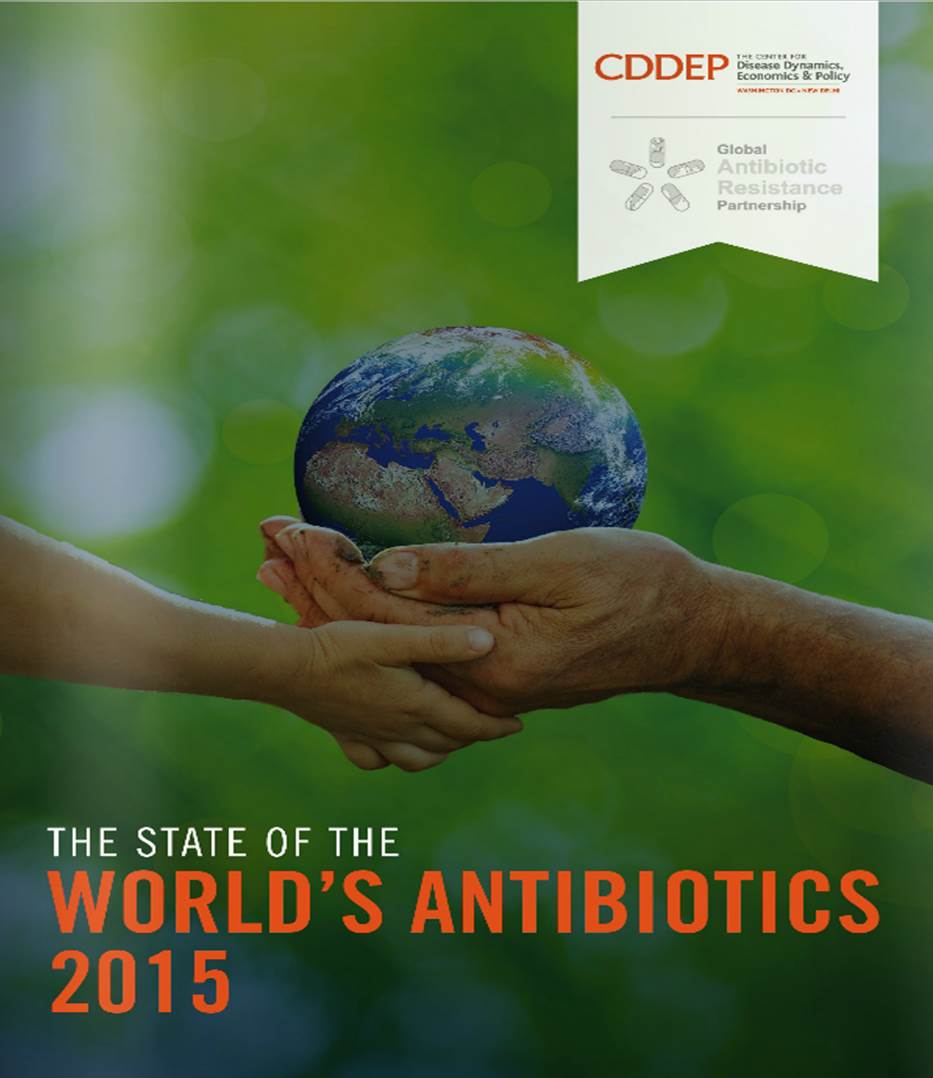The effectiveness of antibiotics is declining, making once-treatable common infections more difficult to cure due to increasing antibiotic resistance. The number of patients dying of an infection is rising and so are the costs for the healthcare system and society, according to a new report from the Center for Disease Dynamics, Economics & Policy (CDDEP), summarizing the state of antibiotic resistance in the U.S. and 38 other countries.
Antibiotic resistance is driven by the dramatically increasing use of antibiotics and is responsible for more than 2 million infections and 23,000 deaths every year in the U.S. at a cost of 20 billion USD. In Europe, about 25,000 deaths are caused by infections that no longer can be treated with antibiotics, and the cost is estimated at 1.5 billion Euros annually.
CONSUMPTION OF ANTIBIOTICS IS INCREASING
The global consumption of antibiotics increased by 30 percent between 2000 and 2010, from approximately 50 billion to 70 billion standard units, based on data from 71 countries. India, China and the United States are among the highest consumers of.
Hospitals cause some of the more critical and difficult-to-treat infections, due to an overuse of antibiotics. This is more common in low-and middle-income countries (LMIC), where antibiotics are used as a preventive measure.
According to the report, the level of antibiotic resistance can be stabilized or reduced by a more moderate use of antibiotics. One of the six strategies suggested, to slow down resistance and maintain the effectiveness of antibiotics, is to improve hospital infection control. Surveillance of resistance and the prevalence of hospital acquired infections provide information for better management and policy decisions.
Hospital acquired infections (HAI) are often caused by medical devices such as intravenous and urinary catheters and ventilators. About 37,000 deaths and 16 million extra patient days at a direct cost of 7 billion Euros in Europe only, are related to HAI. Device-related infections are about 19 times higher and surgical site infections are up to nine times higher in LMICs than in high-income countries.
SAFE AND WELL-PROVEN SOLUTION FOR INFECTION CONTROL
One way to reduce the number of device-related HAI and the use of antibiotics is to use Bactiguard-coated catheters for the urinary-, respiratory tract and the bloodstream, a solution which is effective and safe for the patient. Clinical studies on Bactiguard-coated products show a significant reduction of catheter-related blood infections by 50 percent and a reduction of catheter associated urinary tract infections by 33 percent.
Read the full report “The state of the world’s antibiotics 2015” by The Center for Disease Dynamics, Economies & Policy (CDDEP)

